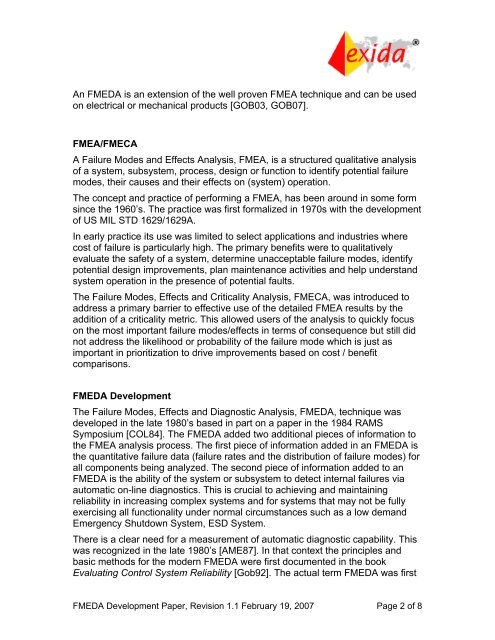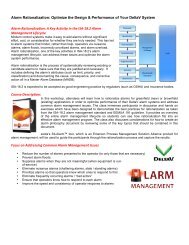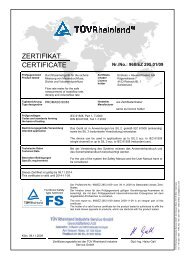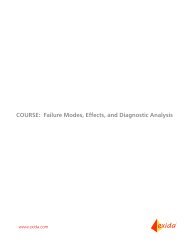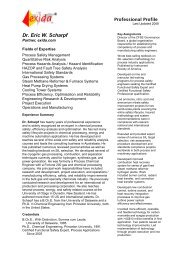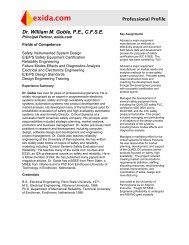FMEDA â Accurate Product Failure Metrics - Exida
FMEDA â Accurate Product Failure Metrics - Exida
FMEDA â Accurate Product Failure Metrics - Exida
- No tags were found...
Create successful ePaper yourself
Turn your PDF publications into a flip-book with our unique Google optimized e-Paper software.
An <strong>FMEDA</strong> is an extension of the well proven FMEA technique and can be usedon electrical or mechanical products [GOB03, GOB07].FMEA/FMECAA <strong>Failure</strong> Modes and Effects Analysis, FMEA, is a structured qualitative analysisof a system, subsystem, process, design or function to identify potential failuremodes, their causes and their effects on (system) operation.The concept and practice of performing a FMEA, has been around in some formsince the 1960’s. The practice was first formalized in 1970s with the developmentof US MIL STD 1629/1629A.In early practice its use was limited to select applications and industries wherecost of failure is particularly high. The primary benefits were to qualitativelyevaluate the safety of a system, determine unacceptable failure modes, identifypotential design improvements, plan maintenance activities and help understandsystem operation in the presence of potential faults.The <strong>Failure</strong> Modes, Effects and Criticality Analysis, FMECA, was introduced toaddress a primary barrier to effective use of the detailed FMEA results by theaddition of a criticality metric. This allowed users of the analysis to quickly focuson the most important failure modes/effects in terms of consequence but still didnot address the likelihood or probability of the failure mode which is just asimportant in prioritization to drive improvements based on cost / benefitcomparisons.<strong>FMEDA</strong> DevelopmentThe <strong>Failure</strong> Modes, Effects and Diagnostic Analysis, <strong>FMEDA</strong>, technique wasdeveloped in the late 1980’s based in part on a paper in the 1984 RAMSSymposium [COL84]. The <strong>FMEDA</strong> added two additional pieces of information tothe FMEA analysis process. The first piece of information added in an <strong>FMEDA</strong> isthe quantitative failure data (failure rates and the distribution of failure modes) forall components being analyzed. The second piece of information added to an<strong>FMEDA</strong> is the ability of the system or subsystem to detect internal failures viaautomatic on-line diagnostics. This is crucial to achieving and maintainingreliability in increasing complex systems and for systems that may not be fullyexercising all functionality under normal circumstances such as a low demandEmergency Shutdown System, ESD System.There is a clear need for a measurement of automatic diagnostic capability. Thiswas recognized in the late 1980’s [AME87]. In that context the principles andbasic methods for the modern <strong>FMEDA</strong> were first documented in the bookEvaluating Control System Reliability [Gob92]. The actual term <strong>FMEDA</strong> was first<strong>FMEDA</strong> Development Paper, Revision 1.1 February 19, 2007 Page 2 of 8


